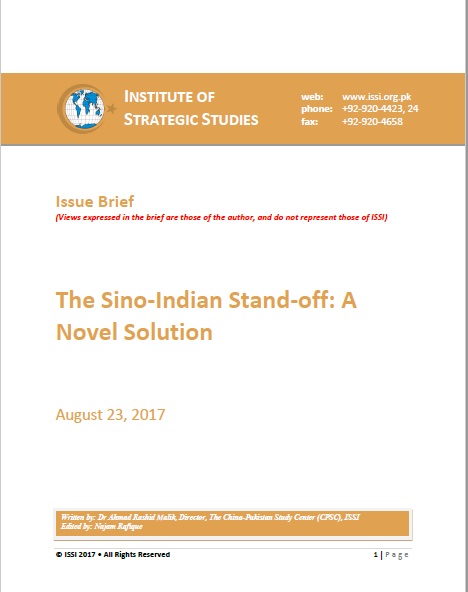Introduction
China and India over the past seven decades to the present day have had intricate ties with the sole exception of the small episode of the Hindi-Chini Bhai Bhai (Indians-Chinese brothers) bonhomie, a slogan raised in the 1950s. Both nations went into a border clash in 1962. However, trading relations have improved to a large extent and today, China is the largest trading partner of India. Over the recent years, bilateral trade has increased above US$ 70.8 billion[1] However, the overall diplomatic trajectory remained at the lowest ebb resulting in periodic brawl from time to time. The diplomatic and political situation has been deteriorating over the past couple of months and there is fear of severe clash between the two nuclear-armed nations. This issue brief analyses the present military stand-off between the two nations and offers a probable solution.
The Escalation
Since June 2017 there has been a stand-off between the Chinese and Indian armies at the tri-junction of China, Bhutan, and India, at Donglang (in Chinese) Doklam (Indian name) at Chumbi Valley in the Himalayan mountains. Bhutan claimed Donglang/Doklam as its territory. China however claims otherwise. It claims Donglang as its part. The Government of Bhutan ‘requested’ India under the 2007 treaty to intervene on its behalf to stop the Chinese interference in its territory. As a result, Chinese and Indian sides brought over 3,000 soldiers each in the disputed area.[2] In retaliation, China cut-off access to a group of Indian pilgrims trying to cross a Chinese pass on their way to Mount Kailash, a sacred site in Tibet for Hindus and Buddhists.[3] Historically, China and India also counter-claimed over Arunachal Paradesh, Sikkim, and Aksai Chin, besides at a number of other border points from east to the west over a disputed territory of over 3,500 km, the world’s largest disputed territory.















